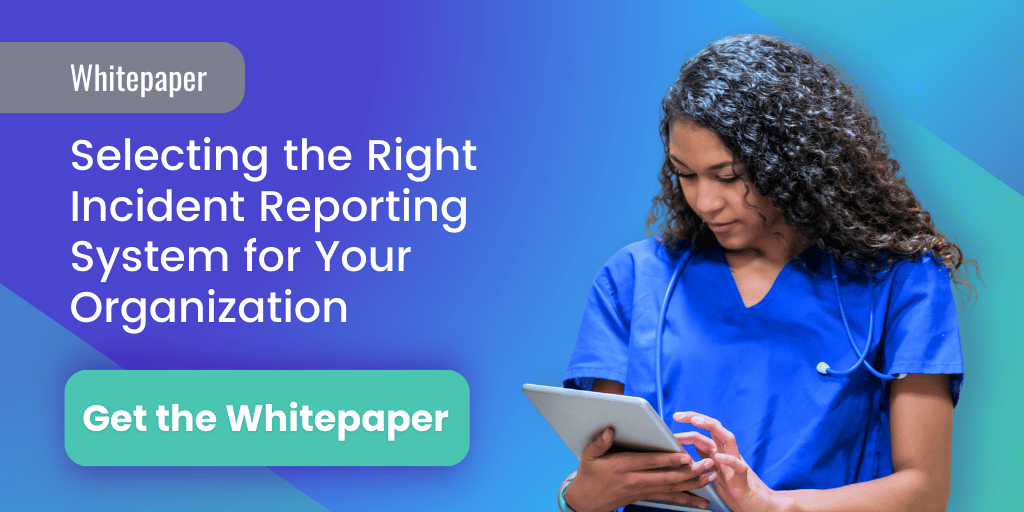5 min read
Preventing Medical Errors with Risk Management Information Systems
Performance Health Partners
October 28, 2024

Risk management information systems (RMIS) are becoming essential tools for healthcare organizations aiming to prevent medical errors, which pose significant challenges globally by impacting patient outcomes and operational costs. These errors, ranging from medication mistakes to diagnostic oversights, can result in serious consequences, including prolonged hospital stays, unnecessary treatments, and even fatalities. By leveraging RMIS, healthcare facilities are addressing these risks more effectively. RMIS helps organizations manage, monitor, and reduce the incidence of medical errors, thus improving patient safety and overall healthcare quality. This article explores how RMIS can significantly prevent medical errors and improve patient outcomes.
Understanding Medical Errors
Medical errors are diverse, encompassing various types such as:
- Medication Errors: Errors resulting from incorrect dosage, wrong medications, or adverse drug interactions. Medication errors are one of the most common clinical errors, harming at least 1.5 million people every year.
- Diagnostic Errors: Mistakes involving delayed, missed, or incorrect diagnoses. There are an estimated 12 million diagnostic errors per year in the United States alone.
- Surgical Errors: Mistakes that occur during surgical procedures, such as wrong-site surgery or post-operative infections.
- Patient Falls: Errors related to patients falling within healthcare settings, which can result in significant injury. Approximately 700,000 to 1,000,000 people fall in U.S. hospitals every year, according to the Agency for Healthcare Research and Quality.
- Equipment Failures: These are errors associated with medical equipment that malfunctions or is improperly used. Each year, the Food and Drug Administration (FDA) receives over 2 million medical device reports of suspected device-associated deaths, serious injuries, and malfunctions.
- Unsafe Blood Transfusions: Errors related to the administration of blood transfusions, such as giving the wrong blood type to a patient. According to the FDA, it is estimated 414 blood transfusion errors occur annually.
- Pressure Ulcers: Bedsores that occur in patients who are immobile for extended periods of time. Over 2.5 million Americans develop pressure ulcers every year.
- Communication Failures: Miscommunication or lack of communication among healthcare providers or between providers and patients. It has been estimated that 27% of medical malpractice cases are the result of communication failures.
Statistically, medical errors are a significant concern in healthcare. One study reported that approximately 400,000 hospitalized patients experience preventable harm each year. Furthermore, it is estimated that these preventable errors cost U.S. hospitals $17 billion annually.
The human and financial burden of these errors underscores the importance of effective solutions, like risk management information systems, to improve patient safety and minimize risks in healthcare settings.
What are Risk Management Information Systems?
Risk management information systems are comprehensive software solutions designed to help organizations manage risks and incidents, particularly in healthcare environments. RMIS primarily aim to prevent, analyze, and report incidents that could lead to patient harm, serving as a comprehensive tool to prevent patient harm and financial loss.
Key components of a risk management information system include:
- Data Collection: Centralizing data from various sources such as incident reports, patient records, and staff feedback. This consolidated data provides a holistic view of potential risks within the organization, reducing the silos that often impede the timely identification of issues.
- Risk Analysis: Identifying potential risks by analyzing patterns in clinical and operational data. By applying algorithms and predictive models, RMIS can identify patterns, trends, and potential risk factors that may not be immediately apparent to healthcare staff. This helps healthcare institutions prioritize risks based on severity and likelihood, allowing for targeted interventions.
- Incident Reporting: Facilitating accurate and timely reporting of incidents for future prevention. RMIS standardize the process by offering streamlined workflows for documenting incidents such as adverse events, near misses, or patient feedback and complaints. This real-time reporting capability ensures that incidents are identified and addressed promptly, reducing the likelihood of underreporting or delays that could lead to further patient harm.
- Monitoring: Continuous surveillance of identified risks and the effectiveness of mitigation measures. Risk management information systems track the resolution of incidents, monitor the effectiveness of interventions, and provide healthcare administrators with ongoing insights into where additional preventative measures may be required.
Traditionally, healthcare organizations have relied on manual processes to manage risks, which are prone to errors and inefficiencies. Conventional incident reporting often involves paper forms or siloed databases that are neither integrated nor easily accessible by various stakeholders. Data analysis through these methods, if done at all, requires time-consuming manual reviews of records, which increases the risk of human error and leaves healthcare organizations with delayed responses to critical issues.
However, with the evolution of risk management information systems, healthcare organizations now have access to integrated, automated systems that provide real-time insights, enabling faster and more effective decision-making.
For example, upon adopting an effective RMIS, MHC Healthcare significantly enhanced its ability to identify, track, and manage incidents such as vaccine errors. With improved visibility and data around where and why these errors were happening, they were able to make system-wide improvements that ultimately reduced vaccine errors by 81%.
This evolution has empowered healthcare providers to move from reactive to proactive risk management. Today’s RMIS platforms don’t just help organizations respond to incidents; they predict potential risks, analyze underlying causes, and recommend preventive actions.
Role of RMIS in Preventing Medical Errors
Risk management information systems offer several benefits in preventing medical errors by streamlining processes and offering actionable insights.
- Incident Reporting: RMIS simplify the reporting process, ensuring that incidents are documented in real-time. These systems allow for detailed reports, which help identify the root cause of medical errors, such as human errors or system failures, thereby ensuring that corrective actions can be swiftly implemented.
- Data Analysis and Insights: By analyzing vast amounts of clinical data, risk management information systems can identify patterns and risk factors associated with errors. For example, an RMIS can highlight and prevent medication errors or diagnostic errors that occur under specific circumstances, enabling healthcare professionals to intervene before issues escalate. For example, Pinnacle Healthcare experienced a 51% reduction in medication errors within just 20 months of adopting an RMIS.
- Preventive Actions: RMIS not only flag risks but also support the implementation of preventive measures, such as updated safety protocols, clinical guidelines, or staff retraining programs. These systems offer predictive insights, helping institutions foresee potential problems and address them proactively.
Challenges and Considerations
While risk management information systems offer substantial benefits, implementing these systems can pose challenges, particularly for organizations that are transitioning from manual processes or outdated systems. Not all RMIS platforms are created equal; some may face barriers to adoption due to complex integration processes, insufficient customization, or lack of user-friendly interfaces.
However, these challenges can be mitigated by choosing a platform that prioritizes ease of implementation, scalability, and user-centric design. Additionally, training healthcare staff on how to effectively use RMIS is crucial to ensure successful adoption and optimize the system’s potential in preventing medical errors.
Future of RMIS in Healthcare
The future of risk management information systems in healthcare looks promising, particularly with innovations such as predictive analytics and artificial intelligence (AI).
Predictive analytics can enhance RMIS by identifying potential risks before they result in harm, allowing healthcare providers to take preventive measures and lowering healthcare costs. Additionally, AI-powered RMIS can automatically detect anomalies or unusual patterns in real-time, enabling faster identification of risks that may not be immediately obvious to human analysts. Furthermore, RMIS has the potential to revolutionize other areas of healthcare management, including resource allocation optimization, compliance tracking with regulations, and staff performance evaluations.
As healthcare standards continue to evolve, RMIS will likely play a more significant role in ensuring quality control and patient safety across different regions and levels of infrastructure, contributing to better health outcomes worldwide.
Final Thoughts
Risk management information systems are a powerful tool in the fight against medical errors, offering healthcare providers real-time insights, enhanced reporting, and preventive solutions. By preventing medical errors, RMIS not only improve patient outcomes but also reduce the financial burden on healthcare institutions.
Healthcare providers should consider investing in RMIS as an essential component of their risk management strategy, paving the way for a safer and more efficient healthcare environment.
As technology continues to advance, adopting a sophisticated and adaptable risk management information system platform will be crucial for healthcare organizations striving to provide the highest quality of care



